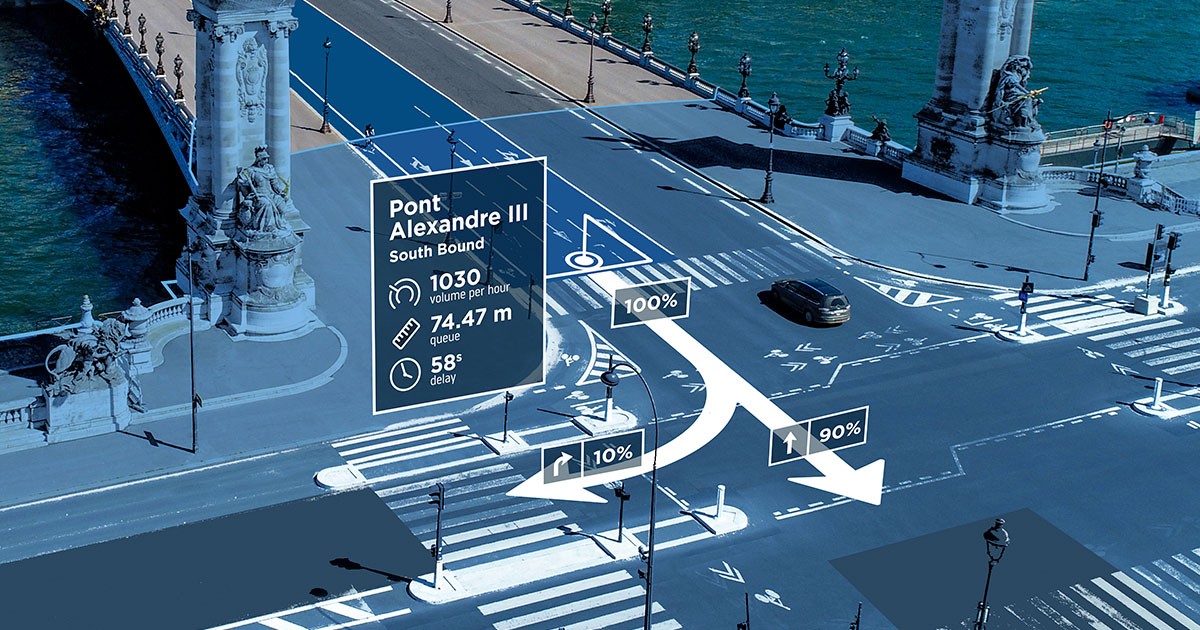Reduce pollution with real-time intersection data – at every intersection
&w=256&q=90)

Improving traffic flow at signalized junctions is crucial to improving road safety, reducing emissions and lowering congestion. Achieving this typically relies on complex sensor arrays that are expensive and difficult to maintain. However, thanks to millions of connected devices, there are other analytical technologies that can help infrastructure operators achieve this without the need for sensors.
TomTom location data shows most urban traffic jams are related to signalized intersections. In Berlin, Germany, during the day, up to 60% are related to signalized intersections. Lessening the impact of signalized intersections on traffic flow is one of the modern city’s biggest challenges.
Traffic control systems are being used worldwide to improve traffic flows at intersections. The importance of traffic control has increased due to its close relationship with issues such as air pollution, fuel consumption and safety.
At junctions, vehicles slow down, stop, rev up to move when lights turn green and drive closely to each other. As a result, intersections have a higher impact on pollution than long stretches of open road. In urban intersections this exposes pedestrians to high levels of pollution from traffic as they wait at the roadside or while walking on the crosswalk.
Smoothing traffic flow at signalized intersections is essential to lowering pollution and increasing safety, and it can be achieved through traffic light optimization. Specialized sensors and hardware are currently required to obtain data to optimize traffic light systems. However, since they are expensive to install, operate and maintain, there are many challenges which prevent or limit intersection traffic data collection.
Many signalized intersections lack of detection hardware. In other cases, the hardware is out of date, which limits data collection, or sensors are not installed in optimal positions, which limits their ability to observe oncoming vehicles and traffic. While sensors are important, there are other ways that traffic flows at junctions can be analyzed, and no sensors are required.
Optimize traffic lights without sensors
To address these challenges, TomTom uses floating car data (FCD) to provide a more sustainable, sensor-free solution, called Junction Analytics. This technology provides a real-time view of vehicle movement and signal performance at every (signalized) intersection. It provides an efficient and low-cost option that allows traffic light operators to observe their junctions without the need of complex and expensive location hardware, such as vehicle sensors and high-definition cameras.

World-wide junction analysis for all intersections
Over 600+ million connected devices provide data insights for intersections in 80 countries. As these connected devices are found in (cars, phones, and trucks) there is no need for local hardware. Traffic light operators and urban planners can use this data, on its own or to extend their current infrastructure. They can use this scalable solution to:
Improve traffic light time to green
Validate traffic light performance for current control systems
Calibrate traffic simulation / prediction models
Optimize corridor and junction performance and discover delay hotpots
Easy access to identify and minimize delays at all intersections
The real-time traffic data is shown in a Web App, to provide a clear overview of how drivers move through intersections. It allows users to visually define and view intersections on a map to gain insights on every approach to a junction. Operators can observe:
Queues - the distance of vehicles waiting
Stops - the average number of stops per vehicle
(Free flow) travel time – duration of vehicles to travel through the approach line
Turn ratios - the percentage of vehicles direction distribution across the approach
(Usual) delay – time it takes for drivers to leave the junction after stopping
This data can also be feed into other systems using our Junction Analytics API.
Optimization through insights
Alongside intersection data, TomTom also offers historical, real-time and traffic prediction data to analyze and anticipate of surrounding road conditions. Combined with data provided by Junction Analytics, infrastructure operators can optimize traffic flows, manage cities and take control without the need for the expensive and high-maintenance sensor arrays that have been traditionally relied on.
With this technology in place, roads can be made more efficient, cleaner and safer for all road users.
Want to see how Junction Analytics works in practice? Contact us for a demo.
People also read
)
Electric motorways: The most cost-effective route to zero emission trucks
)
How traffic impacts navigation: 4 insights on real-time and predictive flow
)
How VMZ Berlin and TomTom are helping to reduce traffic-based pollution in German cities
* Required field. By submitting your contact details to TomTom, you agree that we can contact you about marketing offers, newsletters, or to invite you to webinars and events. We could further personalize the content that you receive via cookies. You can unsubscribe at any time by the link included in our emails. Review our privacy policy.